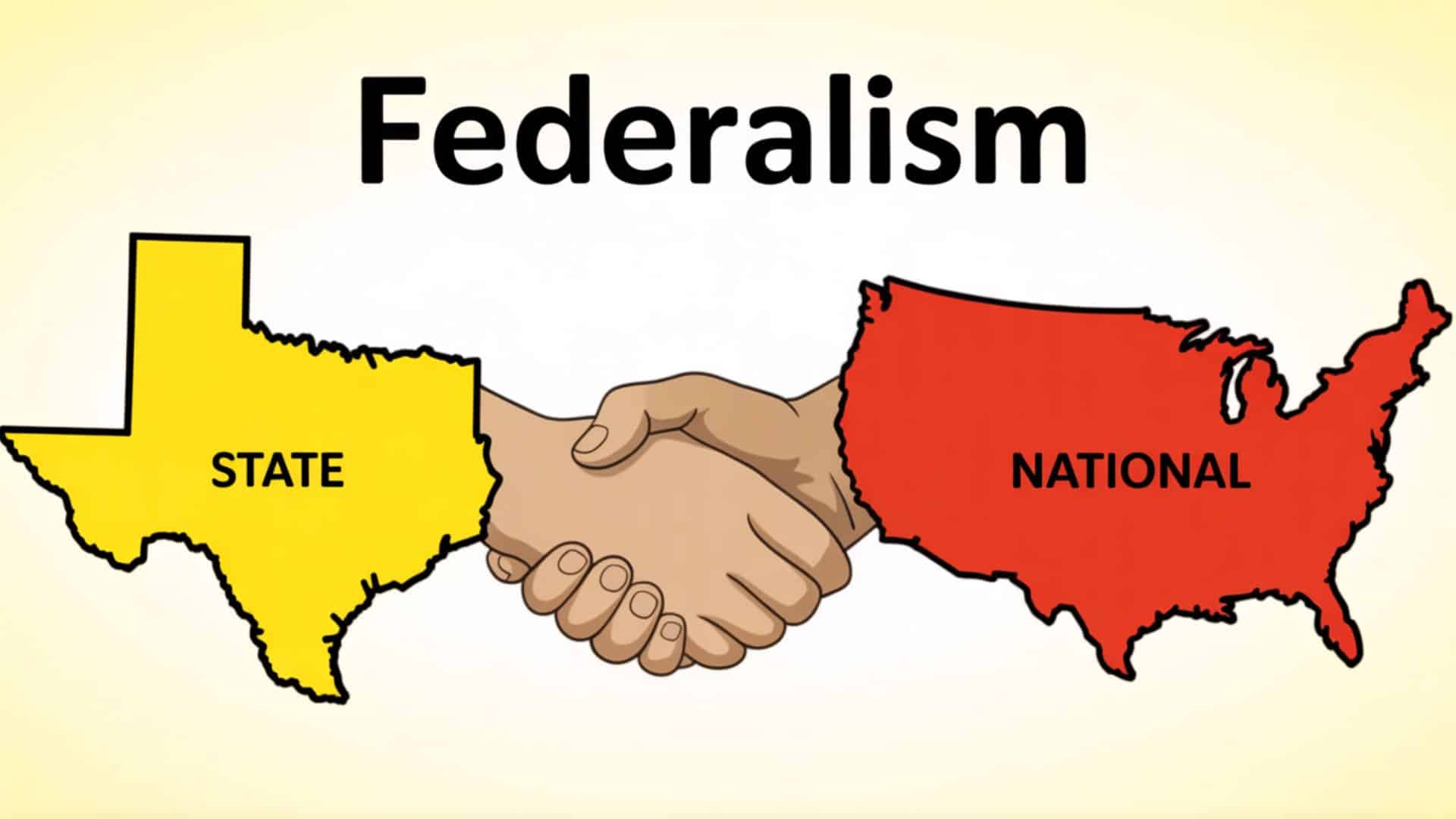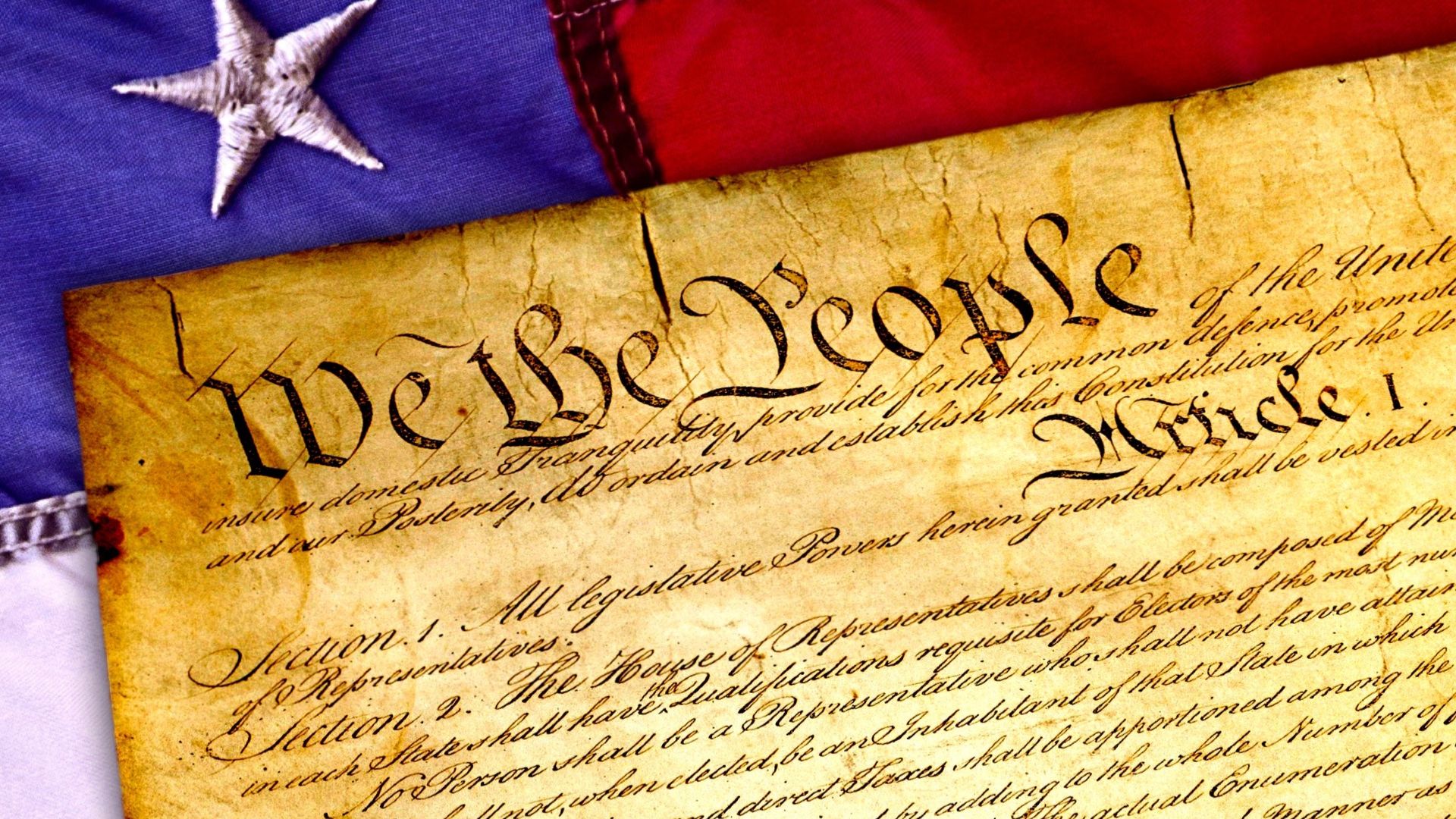What makes the American government different from other countries around the world?
The answer lies in federalism, a unique system that splits power between national and state governments.
This setup establishes multiple levels of authority that work together while maintaining their individual autonomy.
Instead of having a single central government control everything, federalism allows states to handle local issues while the federal government manages national concerns.
This balance creates checks between different authorities, ensuring both national and local voices shape decisions.
In this blog, I’ll show you how federalism shapes US political power and why this system remains essential for American democracy today.
What is Federalism? An Overview
Federalism is a system in which power is shared between national and state governments. Both levels have their own specific duties and responsibilities.
It gives communities freedom to address local matters directly, while the central government maintains unity on nationwide concerns.
Key Features of Federalism:
- Dual sovereignty: Both federal and state governments have authority.
- Written constitution: Rules clearly define who controls what.
- Independent courts: Judges settle disputes between government levels.
- Separate elections: Citizens vote for leaders at both the state and federal levels.
- Shared responsibilities: Some powers overlap between government levels.
The US Constitution established this system in 1787, when the founders sought to create a strong national government while also respecting the rights of individual states.
States control education, local police, and marriage laws, while the federal government manages defense and interstate commerce.
How Does Federalism Shape Political Power in the US?

Federalism splits political power between federal and state governments, creating multiple centers of authority. This division prevents any single government level from becoming too powerful over citizens.
State governments control local issues, such as schools, roads, and public safety, within their respective borders.
The federal government addresses national concerns, including the military, currency, and relations with other countries.
But how does this actually work in practice?
Think of it like driver’s licenses, as each state sets its own rules and requirements. However, all states must honor licenses from other states due to federal interstate commerce regulations.
This power-sharing creates healthy competition between states while maintaining national unity.
States act as real-time policy experiments, where innovative solutions can be observed and later adopted more broadly.
Why Is Federalism Important in The US Political System?
Federalism serves as the backbone of American democracy by creating a balanced system of government power. It protects individual rights while ensuring effective governance across all fifty states.
Prevents Government Overreach
Federalism strengthens accountability by providing citizens with multiple avenues to challenge decisions, whether at the state level or at the federal level.
Allows Local Solutions
Different states face distinct challenges and can develop solutions tailored to their specific needs. What works in California might not work in Wyoming due to geography and population differences.
Protects Minority Rights
States can protect groups when the federal government fails to act. Many civil rights advances started at the state level before becoming national policy through federal action.
Encourages Policy Innovation
States serve as testing grounds for new ideas and programs. Successful state policies often become models for other states or inspire federal legislation nationwide.
Promotes Democratic Participation
Citizens can participate in government at multiple levels, from local city councils to state legislatures to the federal Congress. This creates more opportunities for people to make their voices heard.
State vs Federal Power Balance
The U.S. framework ensures collaboration, with each level of government carrying distinct but complementary responsibilities.
| Basis of Comparison | Federal Authority | State Authority |
|---|---|---|
| Power Source | US Constitution grants specific powers | State constitutions plus reserved powers |
| Territory Covered | All 50 states nationwide | Individual state boundaries only |
| Main Duties | Military, foreign relations, and trade regulation | Schools, police forces, and family law |
| Revenue Sources | Federal income tax, import duties | Property tax, state sales tax |
| Justice System | Supreme Court, federal district courts | State supreme courts, local courts |
| Police Powers | FBI, immigration enforcement | Highway patrol, city police departments |
The Supremacy Clause establishes federal law as superior in cases of conflict, yet states retain considerable autonomy to govern local matters independently.
Key Constitutional Foundations of Federalism

The US Constitution establishes federalism through specific clauses and amendments that clearly define the division of power between the national and state governments.
1. The Supremacy Clause
Article VI establishes federal law as supreme over state law in cases of conflict. This ensures national unity while allowing states to govern in areas not covered by federal rules.
2. The Tenth Amendment
This amendment reserves all powers not given to the federal government for the states and the people. It protects state authority and prevents the federal government from taking over local matters.
3. The Commerce Clause
Article I grants Congress the power to regulate trade with foreign nations and among the states. This clause has expanded federal authority over time to encompass a wide range of business and economic activities.
4. The Necessary and Proper Clause
Also known as the Elastic Clause, it allows Congress to enact laws necessary to carry out its constitutional duties. This flexibility helps the federal government adapt to changing times.
5. The Full Faith and Credit Clause
Article IV requires states to respect each other’s laws, court decisions, and official records. This creates consistency across state borders for legal matters.
How Does Federalism Affect Policy Making and Governance?
Federalism creates a complex policy-making process where multiple government levels must coordinate, compete, and sometimes clash when creating rules that affect citizens daily.
Key Ways Federalism Impacts Policy Making:
- Shared responsibility means that both levels often collaborate on issues such as healthcare, transportation, and environmental protection, necessitating effective coordination.
- Federalism ensures adaptability, as states can quickly pilot approaches before national lawmakers decide whether broader adoption is sensible.
- Funding relationships give the federal government influence over state policy choices by providing money to states with specific conditions attached.
- Legal challenges allow states to fight federal policies in court, while the federal government can override state laws that conflict with national interests.
- Implementation gaps occur because federal policies often depend on state cooperation for success, creating potential delays or conflicts during execution.
This multi-level approach can slow down decision-making, but also ensures policies get reviewed from different perspectives before affecting millions of Americans nationwide.
Wrapping It Up
In summary, federalism fosters a balanced government system that safeguards American democracy by distributing power between federal and state authorities.
This division preserves flexibility in governance, letting policies adapt to both national priorities and local realities.
The Constitution provides a framework through key clauses that define the responsibilities and limits of each level.
Policy-making becomes more complex but also more representative of diverse citizen needs across different regions.
Federal and state governments must work together on major issues while maintaining their distinct roles. It continues to adapt and evolve with changing times and new challenges facing the nation.
What aspects of federalism do you think work best in today’s political climate? Share your thoughts on how this power-sharing system affects your daily life.





































